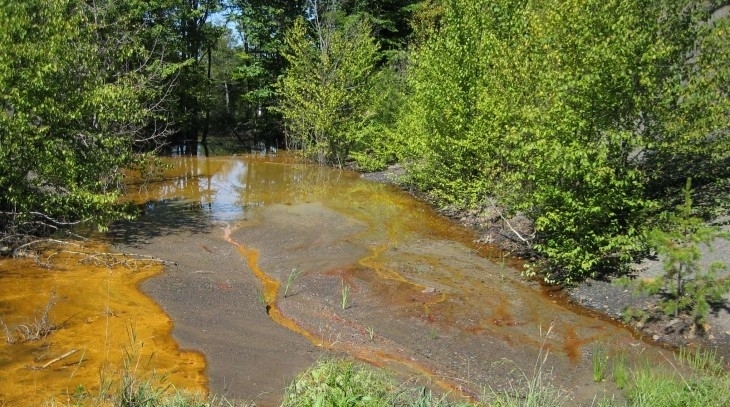Extracting more value from acid mine drainage
A treatment for acid mine drainage targets up to 95% recovery of critical minerals.

Modifications to acid mine drainage (AMD) treatment processes could boost the recovery of rare earth elements (REEs) to up to 95% – compared to 70% with conventional AMD – researchers claim, while also reducing its environmental impact.
‘AMD has been a significant environmental concern for many decades,’ says Mohammad Rezaee, Assistant Professor of Mining Engineering at Penn State University, USA. ‘With a simple modification of existing treatment processes, industry could use less chemicals and get more value out of AMD waste.’
The team can reduce the amount of chemicals used by adding carbon dioxide to the AMD and then bringing it to a neutral pH of 7, the target for environmental remediation.
The CO₂ produces chemical reactions that form solid minerals called carbonates. The REEs bond with the extra carbonates and precipitate out of the water at lower pH values.
The process consists of two stages, which ‘utilised differentiation of precipitation behaviour of REEs and AMD major elements such as aluminium (Al) at pH values below circumneutral, facilitated by low-cost proprietary carbonate ligands’, Rezaee notes.
‘This facilitated the segregation of different elements at different product streams. This way high concentration of REEs can be obtained in the product streams with much less impurities, thereby enhancing the complexity and cost of obtaining high-purity products.’
It was demonstrated in the first stage of precipitation that more than 90% of Al is recoverable, at the second stage (at pH 7) more than 90% of REEs are recovered using the carbonate ligand. Studying various ligands, carbon ligands were found to be the most effective.
‘The reason for the significant improvement of the recovery values at pH values up to 7 relies on the lower standard Gibs free energy of formation (i.e., ΔGf⁰) and solubility of the M₂(CO₃)₃ for REEs compared to other formations,’ Rezaee explains.
Once the water has been treated, it will have a circumneutral pH and less total dissolved solids than AMD treated using conventional processes, which can then be discharged. Rezaee adds, ‘In addition to the high recovery for the critical elements, such perfect separation of Al and REEs (with the same oxidation state) is of significant benefit for the purification processes.’
Rezaee says that for the process development, actual AMD samples were collected at treatment plants operated by the Pennsylvania Department of Environmental Protection. ‘We are in the process of conducting kinetic study and process optimisation for the...scale-up, so that we can apply it in the field with partnership [from the] industry sector.’







